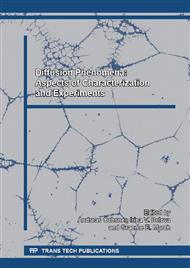p.86
p.96
p.103
p.110
p.121
p.130
p.140
p.149
p.157
Identification of the Moisture Distribution in the Intensively Heated Porous Sand Mould
Abstract:
The problem presented in the paper concerns physical properties of porous multi-component mould material, into which a liquid metal is poured. The aim of the study was to determine the distribution of moisture in an intensively heated porous sand mould. In the past, several measuring methods have been developed, consisting in water evaporation out of a test sample (at a given time moment , the selected position coordinates of a sample), to determine the accumulated amount of water in the sample, which is a percentage of moisture content. The study described in the paper includes experiments of heating a green sand sample. Moisture distribution in a moisture transfer zone of the sample (temperature of the molding sand is approx. 100°C) was determined. In order to determine the moisture distribution, an original method was used. This method allows interfere in various layers of material of predetermined thickness, parallel to the surface of the mould in contact with a heat source. The classical measurement method (gravimetric method) was used for determining the moisture content of each layer.
Info:
Periodical:
Pages:
121-129
Citation:
Online since:
April 2016
Authors:
Keywords:
Price:
Сopyright:
© 2016 Trans Tech Publications Ltd. All Rights Reserved
Share:
Citation:


